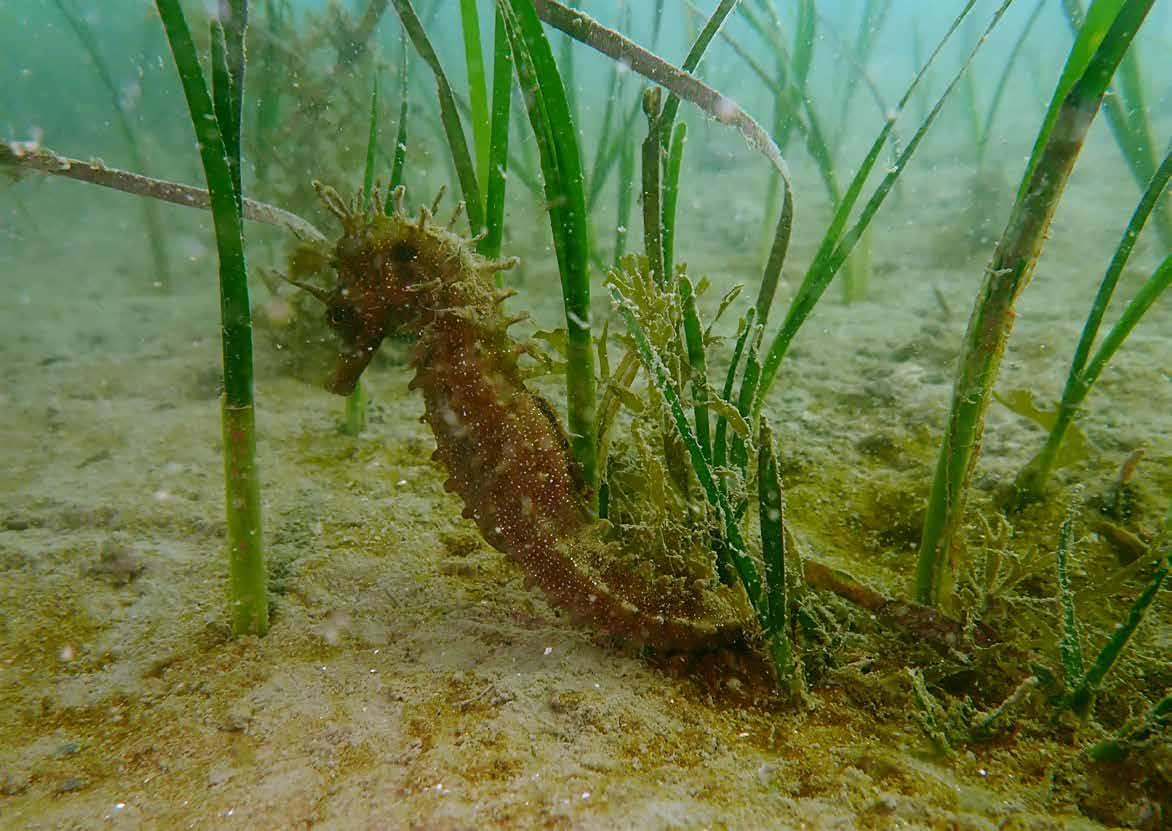
2 minute read
10. Bibliografia
from O Mar dá bom clima
10Bibliografia
1. Short F. et al, 2007. Global seagrass distribution and diversity: A bioregional model. Journal of Experimental Marine Biology and Ecology 350, 3-20.
Advertisement
https://doi.org/10.1016/j.jembe.2007.06.012
2. http://www.theplantlist.org 3. Cunha A. et al, 2011. Seagrasses in Portugal: a most endangered marine habitat.
https://doi.org/10.1016/j.aquabot.2011.08.007
4. Chefaoui R. et al, 2018. Dramatic loss of seagrass habitat under projected climate change in the Mediterranean Sea.
https://onlinelibrary.wiley.com/doi/abs/10.1111/gcb.14401
5. https://www.dn.pt/ciencia/interior/portugueses-acham-ser-vivo-mais-antigo-
a-face-da-terra-2303457
6. Costanza R. et al., 2014. Changes in the global value of ecosystem services. Global Environment Change 26, 152-158. 7. Unsworth RKF et al., 2018. Seagrass meadows support global fisheries production. Conservation Letters. 2018; e12566.
8. Nordlund LM et al., 2018. Global significance of seagrass fishery activity. Fish and Fisheries 19, 399–412.
9. Fourqurean JW et al., 2012. Seagrass ecosystems as a globally significant carbon stock. Nature Geoscience 5, 505–509. https://www.nature.com/articles/ngeo1477 10. Mcleod E. et al., 2011. A blueprint for blue carbon: toward an improved understanding of the role of vegetated coastal habitats in sequestering CO2 .
https://doi.org/10.1890/110004
11. Alexandre et al, 2011. Inorganic nitrogen uptake kinetics and whole-plant nitrogen budget in the seagrass Zostera noltii. Journal of experimental marine biology and Ecology 401, 7-12 12. de los Santos C. et al., 2019. Recent trend reversal for declining European seagrass meadows. https://www.nature.com/articles/s41467-019-11340-4 13. Duarte et al., 2008. The Charisma of Coastal Ecosystems: Addressing the Imbalance. https://link.springer.com/article/10.1007/s12237-008-9038-7 14. IUCN, 2014. Global Seagrass Status and health - summary points from ISBW11. 11th International Seagrass Biology Workshop, Sanya, China. 15. Cunha et al., 2014. Biomares, a LIFE project to restore and manage the biodiversity of Prof. Luiz Saldanha Marine Park. https://doi.org/10.1007/s11852-014-0336-x 16. Paulo, D., Cunha, A. H., Boavida, J., Serrao, E., Gonçalves, E. J., & Fonseca, M. (2019). Open coast seagrass restoration. Can we do it? Large scale seagrass transplants. Frontiers in Marine Science, 6, UNSP-52. 17. Wild S. et al., 2019. Long-term decline in survival and reproduction of dolphins following a marine heatwave. Current Biology 29 (7) PR239-R240
https://doi.org/10.1016/j.cub.2019.02.047
18. Le Quéré et al. (2018). Global Carbon Budget 2018. Earth System Science Data Discussions. 1-3. 10.5194/essd-2018-120. 19. https://www.thebluecarboninitiative.org/ 20. Pendleton L. et al., 2012. Estimating Global ‘‘Blue Carbon’’ Emissions from Conversion and Degradation of Vegetated Coastal Ecosystems.
https://doi.org/10.1371/journal.pone.0043542
21. Waycott, M. et al., 2009. Accelerating loss of seagrasses across the globe threatens coastal ecosystems. Proc. Natl. Acad. Sci. U.S.A. 106:12377–81.
https://doi.org/10.1073/pnas.0905620106
22. Sousa, A.I. et al., 2019. Blue Carbon stock in Zostera noltei meadows at Ria de Aveiro coastal lagoon (Portugal) over a decade. Sci Rep 9, 14387.
https://doi.org/10.1038/s41598-019-50425-4
46
43. Cavalo-marinho nas pradarias marinhas do estuário do Sado.

47

Recurso para professores realizado no âmbito do projeto “O mar dá bom clima”, promovido pela Ocean Alive. Este projeto é co-financiado pela União Europeia e pelo Instituto Camões através do projeto NoPLANetB - AMI.
Este documento foi produzido com o apoio financeiro da União Europeia. O seu conteúdo é da exclusiva responsabilidade da Ocean Alive, e não pode, em nenhuma circunstância, ser considerado como refletindo os pontos de vista da União Europeia.






